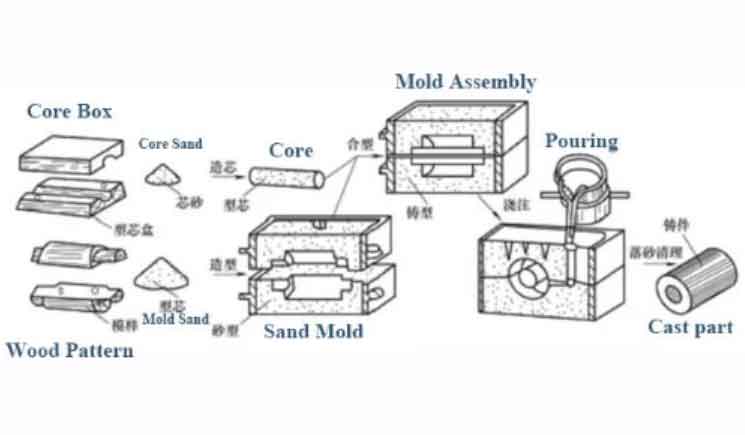
Sand casting parts indeed a cost-effective solution for transitioning from prototype to production of metal parts. Here’s why:
Low Tooling Costs:
Sand casting parts requires relatively low initial investment compared to other manufacturing processes. The molds used in sand casting parts are typically made from low-cost materials like sand and binders, which are readily available and inexpensive. This makes sand casting parts an attractive option for small to medium production runs or when the budget is limited.
Flexibility in Design Changes:
Sand casting parts allows for flexibility in design modifications during the prototyping stage. Since molds can be easily modified or recreated, it is possible to iterate and refine the part design without incurring significant costs. This flexibility is particularly beneficial when the design is not yet finalized, and multiple iterations are required.
Versatility in Part Size and Complexity:
Sand casting can accommodate a wide range of part sizes and complexities. From small components to large castings, sand casting parts suitable for producing parts of various scales. Complex geometries and intricate features can be incorporated into the design, making sand casting parts versatile process for a diverse range of applications.
Wide Material Selection:
Sand casting parts supports the use of a broad range of metals and alloys. Materials such as aluminum, bronze, cast iron, and steel can be effectively cast using this method. The ability to select different materials offers flexibility in meeting specific performance requirements while maintaining cost-effectiveness.
Scalability:
Sand casting parts scalable from prototype to production volumes. Once the prototype is approved, the process can be easily scaled up to higher production volumes with minimal tooling modifications. Sand casting parts can cater to both low-volume and high-volume production needs, making it suitable for various production scenarios.
Quick Turnaround Time:
Sand casting parts typically has a shorter lead time compared to processes like investment casting or die casting. The simplicity of mold creation and the absence of complex tooling result in faster production setup. This shorter lead time is advantageous when time-to-market is critical or when rapid production is required.
Cost-Efficiency for Complex Parts:
Sand casting parts often proves to be a cost-effective solution for producing parts with complex shapes or internal cavities. Casting complex parts as a single piece eliminates the need for additional assembly processes and reduces material waste. This can result in cost savings compared to alternative manufacturing methods that require multiple components or additional machining operations.
Process Refinement:
Sand casting parts mature and well-established process, allowing for continuous refinement and optimization. Over time, manufacturers have developed expertise in sand casting parts, enabling them to improve process efficiency, reduce defects, and enhance overall part quality.
While sand casting parts may not be suitable for all production scenarios, it offers a cost-effective and versatile solution for transitioning from prototype to production. By leveraging the advantages of sand casting parts and optimizing the process, manufacturers can achieve both cost savings and high-quality parts.
